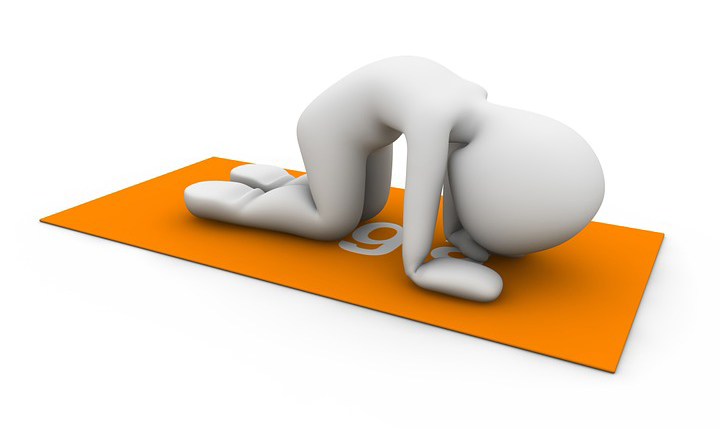About 15 days before the baby is born, a woman can already enter a clinical condition called pre-labor1—especially first-time mothers (primigravidas). It’s important to know the symptoms of this period and what to do to prepare in the best way for the big day. This minimizes stress and possible complications at the end of pregnancy and during labor. All prenatal care, which includes pre-labor, provides health and quality of life for women, as does postpartum care. Some include, for example, classes with midwives and physical exercises. What exactly is pre-labor in your body? This is when the baby moves and begins to get into the ideal position for natural childbirth. This happens on average from the 35th week of pregnancy. The baby turns towards the bottom of the belly, which shifts the internal pressure from the diaphragm to the bladder. This way, symptoms of shortness of breath are relieved, but on the other hand, the need to go to the bathroom increases2. Sometimes, pre-labor symptoms can appear on the same day as birth, especially if this is not your first pregnancy. See other related symptoms and what happens at this stage:
- Cramping and pain in the groin
- Weight loss (about one kilo) or no weight gain
- Swings of high and low energy
- Reduction in fetal movements
- Increased and thicker vaginal mucus
- Expulsion of the mucus plug
- Mucus with blood or pink color: labor has already started!
- Uterine contractions becoming more frequent and stronger
- Diarrhea
Every birth is unique and not all symptoms always occur, nor all at the same time. Even so, there is much you can do to prepare and lose your fear!
Pre-Labor Exercise
Some recommended exercises to relieve pre-labor symptoms bring benefits not only to pregnant women’s well-being, but for all women at different stages of life. Examples of pre-labor exercise include Kegel exercises or pompoirism, some Yoga and Pilates postures, and even having sex can help a lot.
IMPORTANT: Drink plenty of water before and after exercising, breathe well, protect your back when getting up, and rest for one hour after exercising. Avoid overstretching.
Kegel Exercises
Known as introductory exercises of an ancient oriental technique derived from Tantra, Kegel exercises help strengthen the pelvic floor and perineal muscles, a region that will be heavily strained during childbirth. They also prevent hemorrhoids and help heal the perineum. These exercises can be done anywhere, in any position3.
The instructions are: contract the muscles around the vagina as if trying to stop the flow of urine; hold the contraction, counting to five, then relax for ten seconds. Repeat ten times.
This is one set, which can be done consecutively two to four times, and it is advisable to dedicate two time slots a day for the sets. They can be done from the beginning of pregnancy up to and including pre-labor. The more you practice, the longer you’ll be able to hold each exercise.
Yoga Positions
Considered moderate exercise, Yoga also includes some great poses for women preparing for childbirth.
The “cat pose” (Marjaryasana) strengthens the abdominal muscles and relieves cramps and contraction pain during labor. It’s done lying on your front, knees on the floor, hands shoulder-width apart, and arms extended, in a “hands and knees” position.
Instructions: coordinate breathing by inhaling and arching your back upward while contracting your abdomen and glutes. Exhale slowly, returning to the starting position. You can repeat at your own pace.

The “butterfly pose” (Baddha Konasana), in turn, relaxes the hip joints, making it easier for the body to prepare for childbirth. In addition, it can help open the pelvis to allow the baby to pass through. You can do it every day before bed.
Instructions: Sit on the floor, with your back straight or leaning against the wall, knees bent, and the soles of your feet pressed together. Gently press your knees toward the floor without pushing past your limit.
The “chair pose” (Utkasana) is another exercise that helps open the pelvis, in addition to strengthening the leg muscles. With feet slightly apart and back straight, inhale while raising your extended arms in front of you with your palms facing down, then exhale slowly as you bend your knees. There are other good squat positions that are beneficial for pregnant women.
If you have a Pilates ball, a tip is to spend 30 minutes a day—for example, while watching TV—sitting in a squat on the ball.
What to Do During Labor?
It’s not uncommon to feel afraid of the unknown during pre-labor. Many questions arise about what to do during labor, and how it will be. Nowadays, there are already pre-labor classes that calm patients and keep mothers and companions well informed about the labor stages and how to go through them in a healthy way.
Generally, these classes are group sessions led by a midwife or other professionals specialized in obstetrics. All aspects of pregnancy, childbirth, and motherhood are discussed. Future mothers also exchange information with one another, which helps foster a feeling of support.
Labor itself is divided into three stages: pre-labor, the expulsive stage, and delivery of the placenta. In the first stage, there are the so-called practice contractions or Braxton-Hicks contractions as they are known, which probably began weeks earlier, are painless and sometimes unnoticeable, but now occur on average every five minutes, lasting up to 60 seconds.
You don’t need to go to the hospital at this stage, when you can still walk and continue your daily routine normally. The ideal is to rest as much as possible and eat easily digestible meals.
After contractions become stronger, at intervals of three to four minutes, breathing techniques and positional changes can help control anxiety and shortness of breath. The expectant mother may already be in the hospital by this stage, and will need care: some women may tremble, feel cold, feel nauseous, or have diarrhea.
The uterus continues to dilate until it is 10 cm open, which is considered the start of the second stage: the expulsive period. Sometimes there is a break in contractions between the end of the first and the start of the second phase.
Expulsion Stage
From the start of the expulsive period, the uterus begins to push the baby down the vagina during natural childbirth. With each contraction, you need to push so that the baby moves down a little more each time. Until, just before the baby’s head comes out, there’s a burning sensation, and when the head has passed through the vagina, pushing is no longer needed; the birth can proceed at a calmer pace without risk of perineal injury.
The final phase is the delivery of the placenta. After the baby is born, less intense contractions return to allow the placenta to detach from the uterine wall. This takes five to fifteen minutes, and the doctor should carefully examine the placenta and the amniotic fluid (which may also be expelled before birth) to make sure nothing remains. The mother is probably not thinking about that at the moment, though, as it’s time to enjoy her child and breastfeed for the first time!
See Also: Labor – How to Recognize When the Time Has Come
Photo: Peggy_marco, Senado Federal











